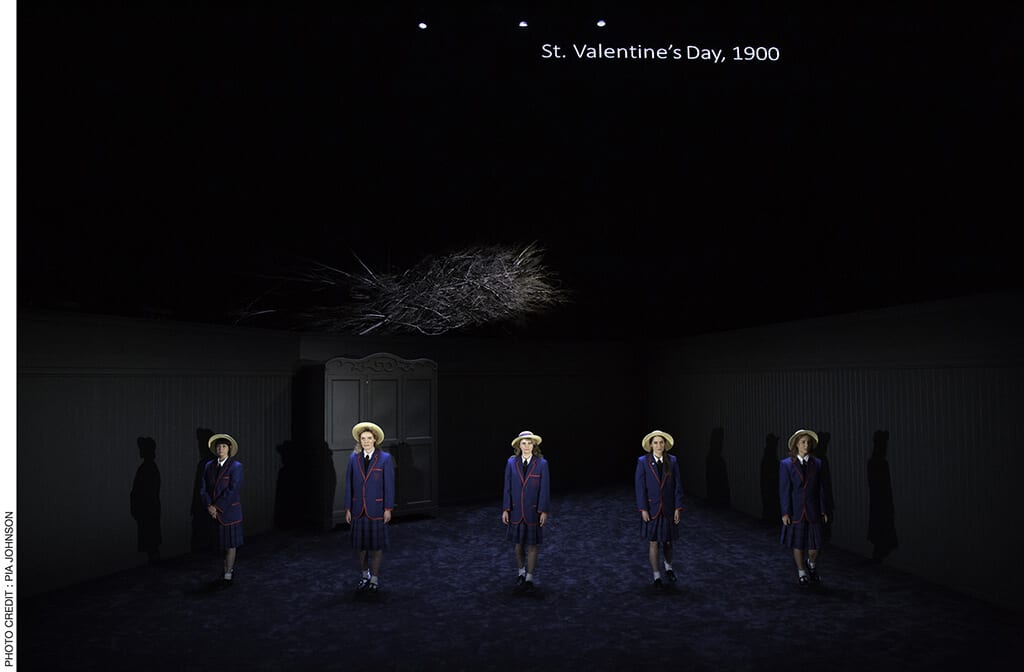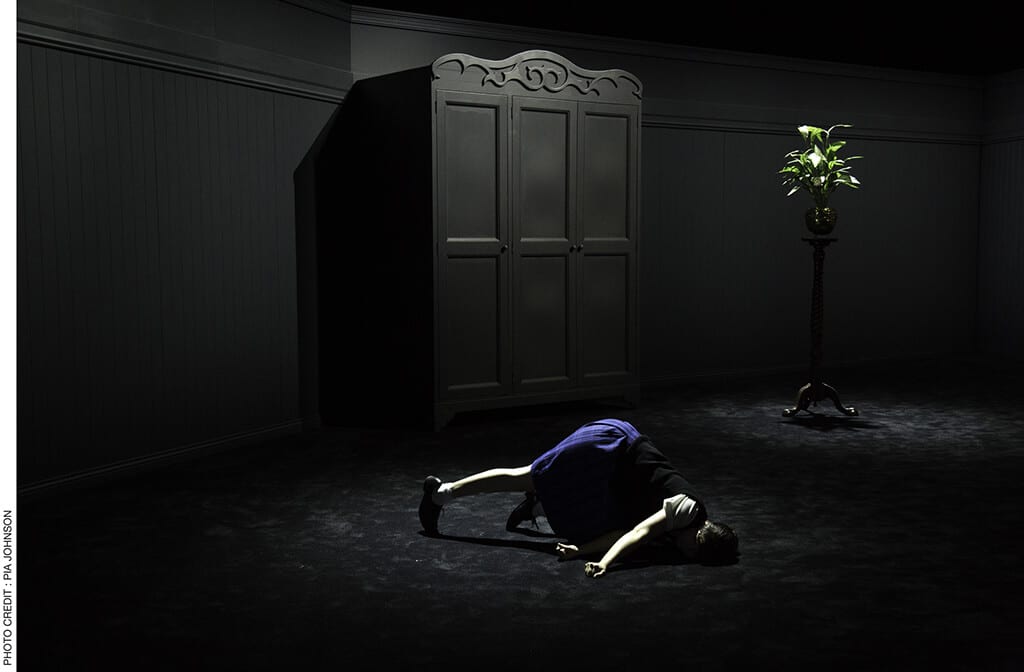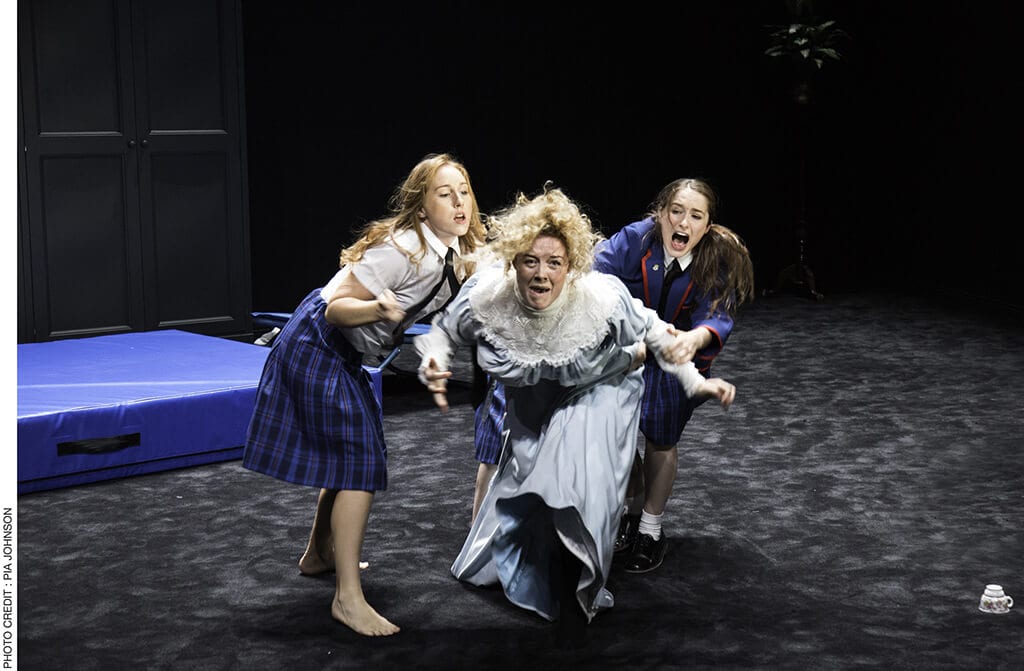The scene is set simply with five primly dressed school girls standing on a bare stage. They tell us how on St Valentine’s Day, 1900, a group of Australian girls and teachers visit the Hanging Rock beauty spot near their school for a picnic. Four of the girls and a teacher wander off to explore the rock – only one returns, scared, incoherent and apparently with no memory of what occurred.
By the end of Picnic at Hanging Rock, those same girls recite the closing moments of the play shoeless and hatless, their jackets lost and the stage strewn with detritus. At least one metaphorical message is clear: the Australian wild is no place for upstanding Victorian values.
These values are embodied by headmistress Mrs Appleyard (Elizabeth Nabben) who fights desperately to uphold them in the face of encroaching wildness, both from without and within. Not only is she struggling against Nature, but also sexual awakening, a metaphor which is strong throughout.
Indeed, the whole production is rather overbearingly filled with metaphor. To emphasise the looming menace of Hanging Rock a pile of brushwood hovers above the stage. One character is shown in ever more animalistic poses to demonstrate the ever-wilder state to which the characters are being driven. Scenes of ape-like abandon and undressing further hammer home the uncivilising effect of Australia on the ‘English’ mind.
There are moments of rather entrancing steam-of-consciousness dialogue which capture the dreamlike quality of this story of the triumph of Nature over Man. Unfortunately, despite the occasionally ethereal effect this creates, much of the dialogue is delivered in a sterile straight-to-camera style, neutering the power of these scenes.
Comprehension of the plot also suffers from certain production choices. None of the girls who disappear are played by any one actor. This becomes particularly problematic with relation to the character of Miranda. Judging by the way she is spoken about after her disappearance by other characters, she is supposed to be entrancing and ethereal, capable of inspiring almost fanatical devotion.
However, as there is never any clear and consistent characterisation of Miranda, the audience has no opportunity to be convinced by this themselves. As a result, subsequent decisions taken by various characters seem bemusing and the reasons for her evident power on the events of the play are a mystery.
Indeed, the whole narrative verges on incoherent at times, but the continually oppressive atmosphere of the piece is undeniable. The score sends shivers up the spine and the pitch black scene changes, stretched to almost unbearably tense lengths, are deeply unnerving to begin with. As the play goes on though, and the audience spends more and more time in darkness, the relevance and effectiveness of these scene changes wanes.
This rather sums up Picnic at Hanging Rock. In places it is eerily effective with the ability to shock and unnerve. Regrettably, the production’s most effective dramatic tools are repeated until they lose their power, while the bulk of the play is presented as a series of entrancing but incoherent monologues. This has the effect of both dulling the power of the story and unnecessarily muddying the waters of what is an already ambiguous plot. There are elements to be enjoyed here, it’s just a shame they were not more consistent.




